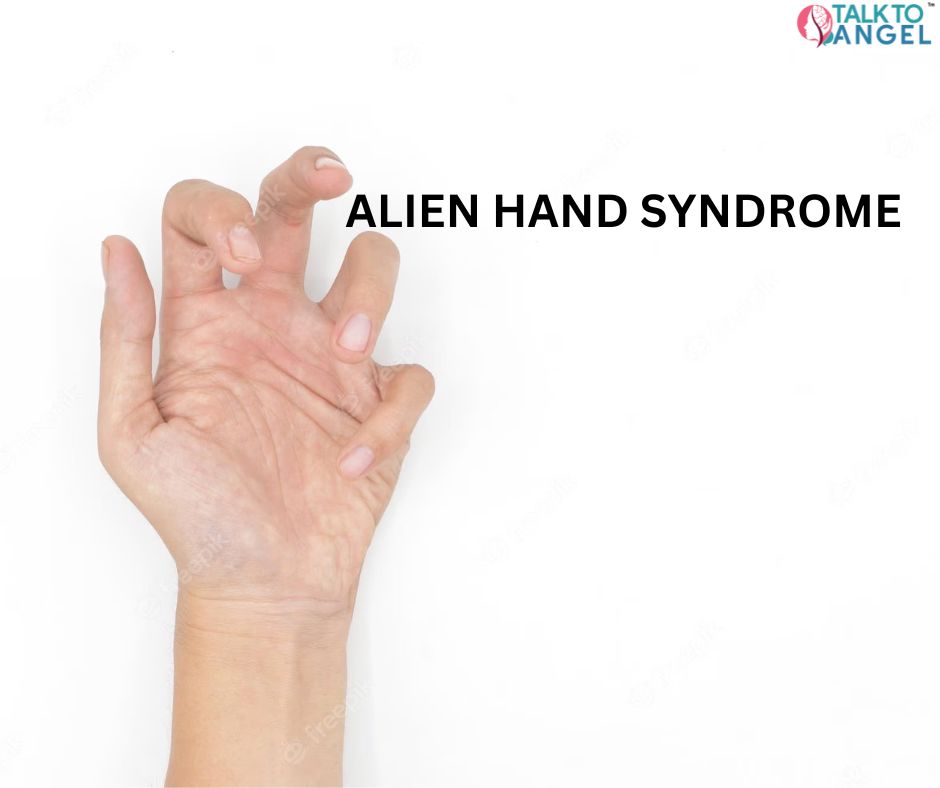What is Alien Hand Syndrome?
Alien hand syndrome, often known as Dr. Strangelove syndrome, is a fascinating condition in which an individual is no longer in control of their hand and it begins to operate independently. It describes one limb's involuntary complicated goal-directed action. Recent usage of the term "alien hand" is broader, requiring apparent involuntary motor activity as well as the sensation that the limb is foreign or has its own volition. The syndrome has been linked to corpus callosum surgery, as well as brain tumors, aneurysms, degenerative brain illnesses, and, in rare cases, stroke. Only a few examples of alien hand as a presentation of cardioembolic stroke have been described in different research.
What causes Alien Hand Syndrome?
Lesions in the posterior parietal cortex or corpus callosum, supplementary motor region, and anterior cingulate cortex have been linked to alien hand syndrome. Functional MRI is being used to investigate brain activity in people suffering from alien hand syndrome. In normal people, the commencement of motor action results in the activation of several vast brain networks. Only solitary activation of the contralateral primary motor cortex is reported in patients with alien hand syndrome. It has been postulated that parietal cortex injuries result in solitary activation of the contralateral primary motor region as a result of its liberation from the intentional planning processes. Damage to the parietal brain can also result in a lack of understanding of movements due to a loss of proprioceptive feedback, commonly known as left hemineglect.
The combination of these elements causes the patient to initiate spontaneous movements without their knowledge or choice.
When other parts of the brain, such as the parietal area, corpus callosum, or frontal region, are affected, alien hand syndrome has been linked to a variety of aberrant involuntary motions.
It is divided into a minimum of four categories:
1) Diagnostic dyspraxia/inter-manual conflict (occurs when one hand uses an action that the other hand should execute);
2) Alien hand sign (a subjective feeling that the hand is someone else's);
3) Syndrome of anarchic hand (when the involved hand performs goal-directed activity against the person's will); and
4) Supernumerary hand (a feeling of having an extra limb). The levitating hand is another sort of alien hand, in which the involved limb seems to float without volitional activity.
. Auto-criticism has been recorded, with the normal hand slapping the alien hand. The person lacks control of the afflicted hand, as if it were being commanded by an outside force. The alien hand may latch onto objects, requiring the victim to employ the other limb to free them. The alien hand has been reported to suffocate the subject in extreme cases.
Aliens hand syndrome has no cure. There are no therapies or pharmacologic choices for alien hand syndrome, but researchers are working on remedies to alleviate symptoms. People suffering with alien hand syndrome as a result of a brain ailment or a stroke might recuperate after some time. People suffering from neurodegenerative disorders, on the other hand, have a lower chance of recovery.
Muscle control medicines such as botulinum toxin (Botox) and neuromuscular blocking medications can be used to treat or manage the condition. In certain situations, benzodiazepines have been effective, although behavioral methods appear to be more effective.
Symptoms can be managed with mirror box treatment, cognitive therapy approaches, and learning task behavioral therapies. Visual coaching strategies may also be beneficial. Sometimes the person will attempt to control their alien arm by squeezing it between their legs or by sitting on it.
Some people may find it useful to place an object in the alien hand in order to prevent it from executing duties.
It may be beneficial for the person suffering from alien hand syndrome or another person to issue vocal directives to stop the acts. This strategy, however, may not give long-term results. Physical and occupational treatments may be recommended by a doctor.
A few quick facts
The following are some facts about alien hand syndrome:
- It was first documented in 1909.
- The left or non-dominant hand is commonly affected by alien hand syndrome.
- In Stanley Kubrick's 1964 film Dr. Strangelove, one of the characters suffers from alien hand syndrome. As a result, some people call the alien hand syndrome Dr. Strangelove syndrome.
Some individuals name their alien hand.
Don’t Lose Hope
Although there is currently no treatment for alien hand syndrome, you may even be able to control your symptoms. If you have symptoms of an alien hand, see your doctor on a frequent basis. A thorough diagnosis may assist to alleviate any discomfort you are feeling. Your doctor will assist you in managing your symptoms and developing an appropriate treatment strategy based on your specific needs.
The top online mental health specialists are available at TalktoAngel. Search phrases can be entered into this search engine. "Online counselor" or "Best Therapist in India" to get the help you need.


No comments yet